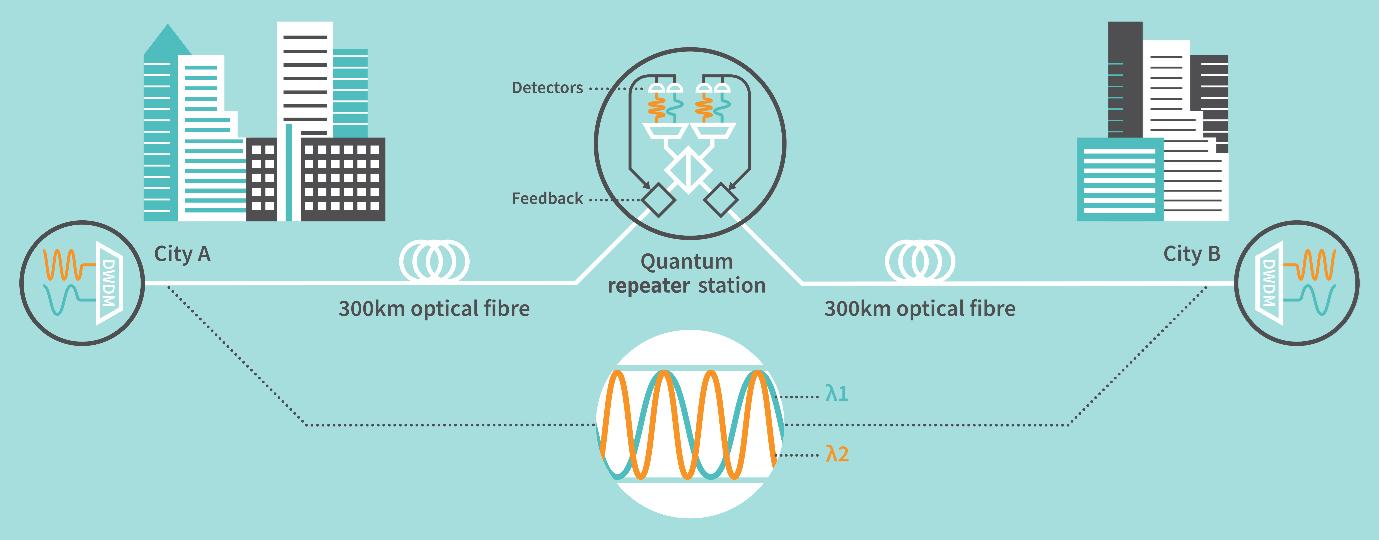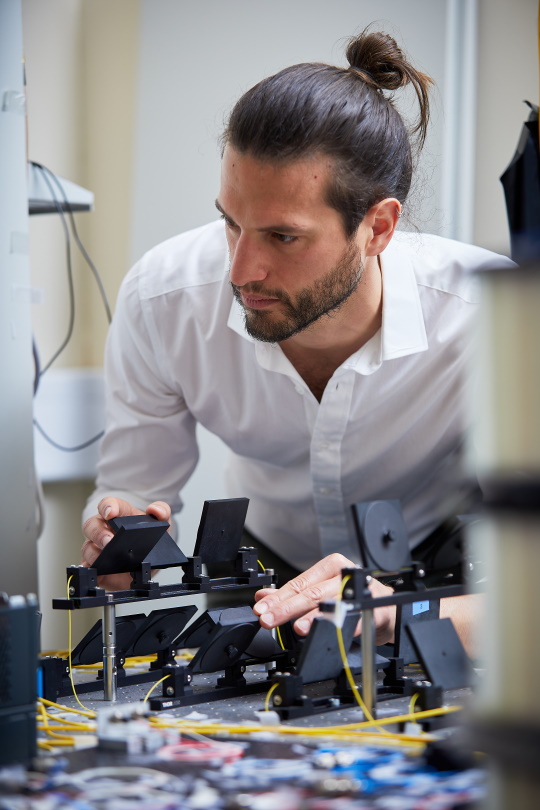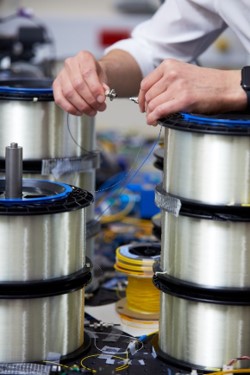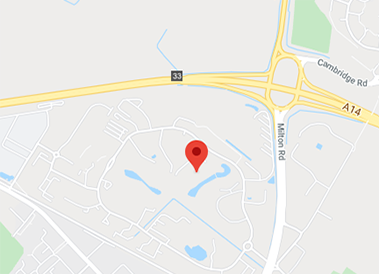We use cookies to ensure that we give you the best experience on our website. If you continue to browse without changing your settings, we’ll assume that you’re happy to receive all the cookies on this Toshiba website. You can also click the “Continue” button to accept our policy in your browser so this message does not appear in the future. You can, of course, change your cookie preferences at any time via your browser settings. Details of our cookies and cookie policy are accessible under the link “Find out more”.
Fibre QKD
Today’s communication networks make extensive use of optical fibre for transporting data. With the coming quantum era, it is therefore vital to consider how such fibre-based communications can be made quantum-safe. Fortunately, quantum key distribution (QKD) is ideally suited to optical fibre platforms, since fibres are ideal carriers for the single-photon signals upon which QKD depends. There are also many challenges, however, which we are actively addressing to develop high-performance QKD systems capable of being seamlessly integrated into current optical fibre networks around the world.
Our main research themes within the Fibre QKD area include the following.
Twin-Field QKD & Other Novel QKD Protocols
We are continually pushing the limits for the maximum secure bit rate and longest distance over which QKD can operate. To achieve this, we are actively investigating new QKD protocols and designs for QKD systems and networks.
For example, a recent highlight from our lab was the invention of Twin-Field QKD (TF-QKD). TF QKD exploits first-order interference of encoded signals from two users and fundamentally changes the scaling relationship between secure key rate and channel loss, enabling drastically longer distances to be covered. Using this protocol, we recently developed a QKD system operating over a record-breaking 600 km, and we continue to explore new TF QKD system designs to improve the performance.

Overcoming the rate-distance limit of quantum key distribution without quantum repeaters, M. Lucamarini et al., Nature, 2018.
600-km repeater-like quantum communications with dual-band stabilization, M. Pittaluga et al., Nature Photonics, 2021.
Experimental quantum key distribution beyond the repeaterless secret key capacity, M. Minder et al., Nature Photonics, 2019.

Quantum secured gigabit optical access networks, B. Fröhlich et al., Scientific reports, 2015
A quantum access network, B. Fröhlich et al , Nature, 2013.
Quantum Networking
Just as real-world networks for communicating classical information comprise multiple users connected by many optical fibre links, there is a need to develop quantum networks to upgrade such network-wide communications to be quantum-safe. We are currently exploring techniques to develop robust and scalable quantum network using ‘trusted node relaying’. This approach involves relaying a global key throughout a network comprising multiple QKD links, enabling larger geographical areas to be secured than using a single QKD system alone.
We are also adapting other network topologies from classical optical communications to the quantum domain, for example, developing quantum access networks.
Integrating Quantum & Classical Networks
As QKD relies on the generation and detection of single photons, it can be a challenge to combine such signals with existing ‘lit’ optical fibre networks carrying light signals that are millions of times stronger (since such signals can contribute noise to sensitive quantum detectors). However, this is an important requirement for many end-users, since dedicated dark fibres are not always available. To overcome this issue, we are developing various techniques to enable co-propagation of classical and quantum light signals. For example, by carefully optimising our QKD light sources and detection systems, we have demonstrated that it’s possible to combine QKD with 10 Tb/s classical data over a 50 km fibre link.
As well as performing research into the physical layer of network integration, i.e. combining quantum and classical signals, we are also interested in integrating QKD with emerging high-performance approaches to network management. For example, software-defined networking (SDN) is currently bringing simplified management benefits and flexibility to classical networks and we are actively exploring how such technologies can be adapted to QKD systems.

Quantum key distribution for 10 Gb/s dense wavelength division multiplexing networks, K. A. Patel et al., Appl. Phys. Lett., 2014.
Quantum key distribution over multicore fiber, J. F. Dynes et al., Optics express, 2016.
QKD Field Trials
As a technology-focussed research group, we have a long history of performing field trials to demonstrate QKD in real-world networks. Such environments are significantly more challenging and unpredictable than in a laboratory, and require the development of sophisticated stabilisation techniques to ensure optimal QKD system performance in response to changing external factors.
Building upon many of these successful trials, Toshiba launched a QKD product in 2020. As a research group, we continue to perform select field trials to showcase QKD performance and better understand the impact of real-world networks on quantum communication signals, using both the product and newer R&D-grade systems. We are also focussed on demonstrating various use cases that highlight the benefits and opportunities of quantum-safe communications. For example, some of our recent field trials and collaborations include the following.
Cambridge quantum network, J. F. Dynes et al., npj Quantum Information, 2019.
Quantum-Safe Industry 4.0 Communications
The emergence of highly automated industrial practices driven by large-scale machine communication, known as Industry 4.0, offers new opportunities for smarter, more productive manufacturing. This also creates new challenges, however, due to the vast volume of commercially sensitive data which must be protected.
Toshiba, in collaboration with BT, recently developed a quantum-secure network between the National Composites Centre (NCC) and Centre for Modelling and Simulation (CFMS) in Bristol, bringing quantum security to their highly confidential communication of manufacturing designs. This was a challenging network due to limited bandwidth available to use for QKD on the supplied fibre, but we successfully developed a QKD system that integrated seamlessly with their network to provide a 10G quantum-secure encryption tunnel for data flowing between the 2 manufacturing sites.
Securing Blockchain with QKD
Financial records are a prime example of data requiring long-term confidentiality. Many financial intuitions are currently using blockchain for such records, although the security of this is threatened due to the use of non-quantum-safe algorithms.
Toshiba recently partnered with JPMorgan Chase and Ciena to demonstrate quantum-secured blockchain applications. A key challenge here was the need to multiplex QKD signals with ultra-high-bandwidth 800G data streams, requiring careful system design to avoid unwanted crosstalk between quantum and classical signals.
Medical Secret Sharing
With the increasing digitisation of medical care, there are growing amounts of medical data that need to be shared between hospitals. Unfortunately, it is well known that such medical data is often the target of hackers due to the high black-market value of stolen medical data.
Toshiba recently demonstrated a solution, in partnership with Fragmentix as part of the OpenQKD EU-funded project. QKD was used to provide protection for the data in transit, with added security to protect the data at rest using Shamir secret sharing to fragment it over multiple locations. This demonstrates some of the opportunities for building high-performance cryptosystems by combining QKD with other cryptographic primitives.
Latest Publications
Davide G. Marangon, Peter R. Smith, Nathan Walk, Taofiq K. Paraïso, James F. Dynes, Victor Lovic, Mirko Sanzaro, Thomas Roger, Innocenzo De Marco, Marco Lucamarini, Zhiliang Yuan & Andrew J. Shields
J. A. Dolphin T, ENG, T. K. Paraïso T, H. Du T, R. I. Woodward T, D. G. Marangon T and A. J. Shields T





